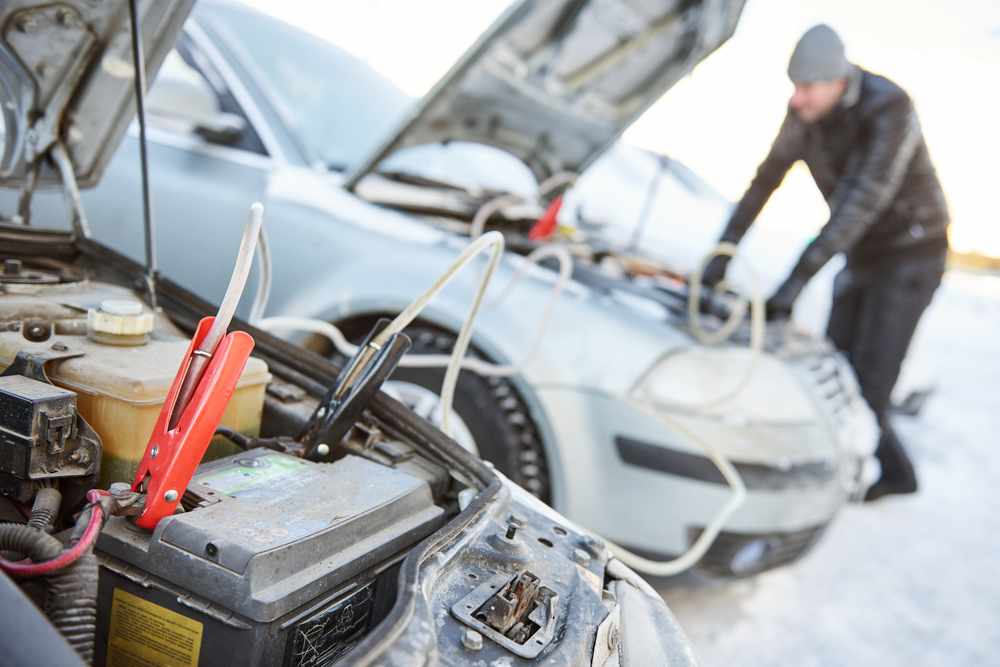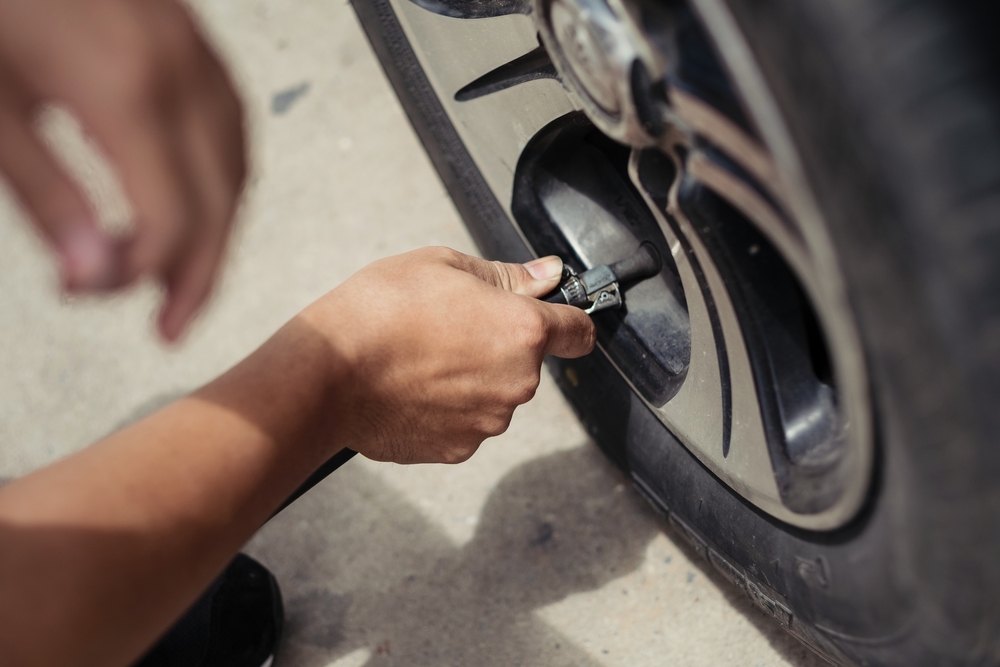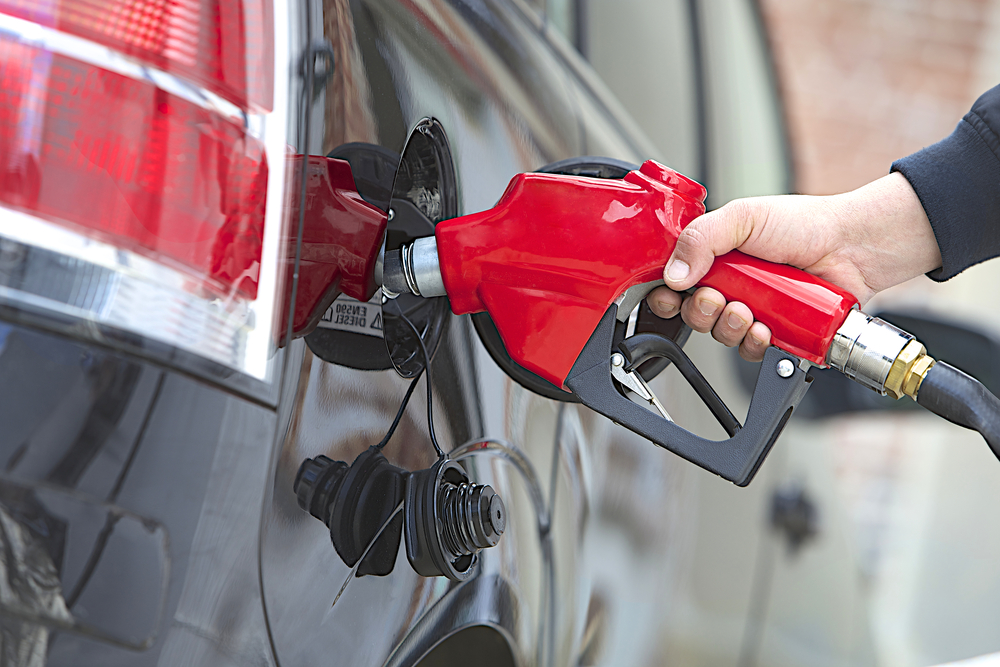A car is one of those rare investments that starts decreasing in value the moment you sign the paperwork and drive it out of the dealership’s lot. Unless you’re fixing up an antique car, it’s fair to say that used cars don’t increase in value. Despite the inherent loss, owning a car can be a necessary part of life depending on where you live, where you work, and other extenuating circumstances. And while the car itself won’t increase in value, you can get a lot out of a car, including a time-saving commute and travel cheaper than airfare. Plus, the first time you buy a car, if you finance the vehicle and don’t pay solely in cash, you’ll start building your credit score (make those payments on time!), which will help you make purchases, get approved for rentals, and open credit card accounts later on. It’s an investment that, with a little luck, will pay off.

Freedom_Studio / Shutterstock.com
That’s not to say that if you treat your car badly and get into a lot of accidents you’ll end up with the best value for your vehicle. Accidents that are your fault almost always raise your insurance rates, and sometimes, accidents that aren’t your fault (especially if you live in a no-fault state) can also raise your rates. If your insurance skyrockets and you keep having to pay for repairs, the value that you get out of your car (the amount you paid for the car and the amount you pay for insurance and upkeep versus the use you get out of it) is going to tank, not to mention the resale value. Avoiding accidents is one thing, but keeping your car in good shape so that it’ll last you a long time is another, and it’s super easy.
Here’s what to do:
Take your car for regular maintenance, but before you do, check the owner’s manual of your car. A mechanic will likely tell you that your car needs an oil change every 3,000 miles, and while this wouldn’t hurt your car, it’s unnecessary unless your car is old. How often you need an oil change depends on the type of oil you use (conventional, synthetic blend, or synthetic) and your vehicle itself. The specifications for each car are different (seriously, read the owner’s manual), but you’re probably safe getting your oil changed every 5,000 or more miles. Likewise, in an automatic car, you may not need to flush your transmission fluid until you’ve traveled 100,000 miles, but a mechanic may recommend it every 30,000. Doing it sooner won’t harm your car but will cost you money. Know your car so that you know when to say no to a mechanic’s sales pitch; you have to remember, they’re out to make a buck. Don’t stop going altogether, though. You’ll get better gas mileage if you keep your car in top shape, and you’re less likely to be surprised by big problems, like a cracked engine mount, if a professional sees your car every few months.

Dmitry Kalinovsky / Shutterstock.com
Learn how to do small maintenance activities yourself. Windshield wipers, light bulbs, and air filters in particular are easy to self-install. Instead of making an appointment at the nearest Goodyear or dealership, save yourself both the time and money by trying a little DIY. Not only will you only have to pay the cost of the parts, but your car will be safer and (in the case of new air filters) more fuel efficient as a result.
Learn how to change a tire and how to jump-start an engine. These are those things that you never need to know until something happens to you, but unless you subscribe to a roadside maintenance service or have really great friends, you could be up a creek. Investing in a pair of jumper cables is only going to set you back between $10 and $20, and it will save you time and the trouble of calling for a tow truck should the need arise.
Enroll in AAA or a similar car membership program. This is especially important for anyone who doesn’t know how to change a tire or jump-start an engine, but it’s helpful to car-savvy individuals as well. If your battery dies and needs replacing, for instance, your membership fee will ensure that when you call for help, you only have to pay for the cost of the part. Likewise, if you break down and need towing, a certain number of miles are included in your membership, free of charge. AAA is one of the many companies that offer these services; you may be able to join through your insurance provider as well. Shop around to ensure that you get the best deals for the best rate.
Shop around for gas. If you install the GasBuddy app on your phone (available for Apple and Android devices), you can use it to find the cheapest gas prices near you. You may find that instead of filling up at the gas station on the way to school, you’ll save 10 cents a gallon if you fill up at the gas station closer to your grocery store. These small amounts really add up over time.
- Unless your car absolutely requires premium gas (owner’s manual!), you’re fine filling up with regular unleaded; it’s a waste of money otherwise.
Consider a credit card or grocery store membership that offers fuel or cash rewards. Many credit cards offer cash back, but some will offer a higher percentage if you shop at particular types of stores, gas stations included. If you’re already in the market for a credit card and know you’ll be driving a lot, consider a credit card that will reward you for buying gas. Alternatively, become a card-carrying member of a grocery store rewards program. They’re often free to sign up and will give you discounts at an associated gas station that are commensurate with the amount you spend on groceries.
Pay attention to the dashboard lights. They’re going to light up when something goes wrong. Learn what each light means and don’t ignore them once they turn on. Time to head to the mechanic before anything gets worse and you have to pay for more intense repairs.

bunyarit / Shutterstock.com
Keep your tires properly inflated. Your owner’s manual (which should be quickly becoming your new best friend) will tell you the level to which your tires need to be inflated. They will lose air naturally, especially when the outside temperature fluctuates, and a light on your dashboard should warn you when at least one of your tires is low. Keep a pressure gauge in your glove compartment and know the nearest place to fill up on air (usually a gas station). Driving on underinflated tires results in uneven wear and tear, meaning that your tires will need replacing faster. Tires can easily cost $100 each and often are replaced in sets of two, so keeping them as long as possible is a plus. When you take your car in for regular maintenance, ask for your tires to be rotated to ensure the most even wear.
Cut back on the aggressive driving. Start and stop driving—with intense acceleration and slamming on the breaks—is terrible for your fuel economy. Be gentle when accelerating and braking to get the most mileage out of your gas tank, coast to a stop when possible, and don’t speed. After reaching about 55 mph, the faster you go, the consistently worse your fuel economy becomes. (That’s not to say that you should go 50 mph when the speed limit is 70 mph, but that you should resist the urge to go 75 mph.)
Do all your errands in one day. Drive to the furthest away errand first, and then slowly make your way home. You’ll save gas because you’ll drive fewer miles overall by not traveling to and from home each time, and you’ll save time for the same reason. You’ll have more time to do fun things, like homework and cleaning!
Ask for a mileage discount on your insurance. If you drive your car fewer miles annually than most drivers, say, fewer than 12,000 miles, you may be able to get a discount. Talk to your insurance company about your options. Bundling your car insurance with your renter’s insurance, personal property insurance, or any other insurance you get through the same company may also result in discounts.

JPC-PROD / Shutterstock.com
Even if you’re not a car owner yourself, know how to fill up on gas. It’s not a hard skill to learn, because, for the most part, the pump will do the work for you, but if you ever rent a car or borrow a car from a friend, it’s in your best interest to return it with a full tank. Rental-wise, this will save you money because rental agencies charge upwards of $9.00 a gallon when a vehicle is returned with less than a full tank. Compare that with the highest recorded average price of gas in the United States, $4.11/gallon (back in 2008), and you’ll make out like a bandit if you do it yourself. Friend-wise, filling up the tank is just a decent thing to do. You borrowed it, so you should pay for what you used. It’ll save your friendship and ensure you have access to the car again should you need it.
Finally, whether or not you have a car, familiarize yourself with the local public transit system, whether it’s the bus, train, or subway. There will be times when you need to leave campus for a doctor’s appointment, a concert, or a weekend getaway, and you’ll need a way to travel. Students often get free or reduced rates on local transit, so be sure you keep your student ID card with you at all times. Leaving your car parked in the lot while you take a different form of transportation may be the cheapest way to go!
-
The Relationship between Credit Card Debt and Credit Card Literacy
-
How to Do Laundry: Tips to Master Everyone’s Least Favorite Chore
-
Executive Functioning Skills: Focus and Self-Control
-
Life Skills that Will Help You Both at School and in Your Career
-
Goal Setting: Why It’s Important and How to Succeed
-
Creative Ways to Save Money Even When You Feel Broke
-
Executive Functioning Skills: Cognitive Flexibility
-
Executive Functioning Skills: Emotional Control
-
The Ultimate Car Emergency Kit for Students
-
Packing for a Cold Climate: What to Wear and Where to Shop
-
Introducing Executive Functioning Skills
-
How to Be a Better Listener

